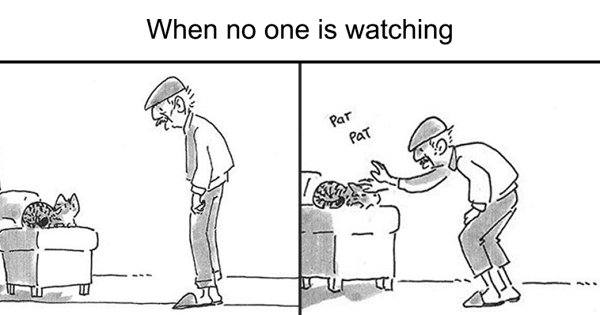JAPAN - It’s often said that cats are secretly plotting against their human companions – and now, researchers say they may even be using physics to study and know our every move.
According to a new study out of Japan, cats use a combined understanding of ‘cause and effect’ principles and some elements of physics to predict the location of unseen prey based solely on sound.
Researchers believe these skills may be favored by their natural hunting style, as they often hunt in areas of poor visibility.
Researchers from Kyoto University have investigated whether cats could infer the presence of a hidden object to predict its appearance based on auditory stimuli.
The team videotaped all of the responses of thirty cats to different noise-based scenarios.
In a series of tests, an experimenter shook a container and simultaneously produced a rattling sound or no sound at all.
‘Information from the environment is often limited to specific sensory modalities; for instance, a cat may hear but not see a target object,’ the authors described in a paper published to the journal Animal Cognition.
‘When animals perceive incomplete information, they may have to complete the remaining parts from other available clues.’
Sound was used to imply that there was surely an object inside the container, while no sound would suggest it was empty.
Then, the container was turned over to drop an object out, or reveal that there had been nothing inside.
In some cases, the experimental conditions actually lined up with the laws of physics – if there was no sound during the shaking, then no object would fall out of the container, but if there had been a sound, an object would appear.
Other times, however, all of the conditions were incongruent.
This meant that turning the container over after making a rattling sound would not produce an object at all, while the no sound scenario would then lead to something falling out.
When analyzing the responses, the team found that the cats spent a lot more time looking at containers that were accompanied by a noise when shaken.
According to the researchers, this suggests that the cats used an understanding of physical laws to infer whether or not an object would appear.
The cats were also found to simply stare longer at containers in an incongruent setup, suggesting they may have a ‘rudimentary understanding of gravity,’ which was greatly challenged by the conditions of the experiment.
‘Cats use a causal-logical understanding of noise or sounds to predict the appearance of invisible objects,’ stated Saho Takagi, who led the study.
Moving forward, the researchers say future studies have to be done to reveal what exactly happens in a cat’s brain when they hear these auditory signals and to determine how much information is actually extracted from noise.




